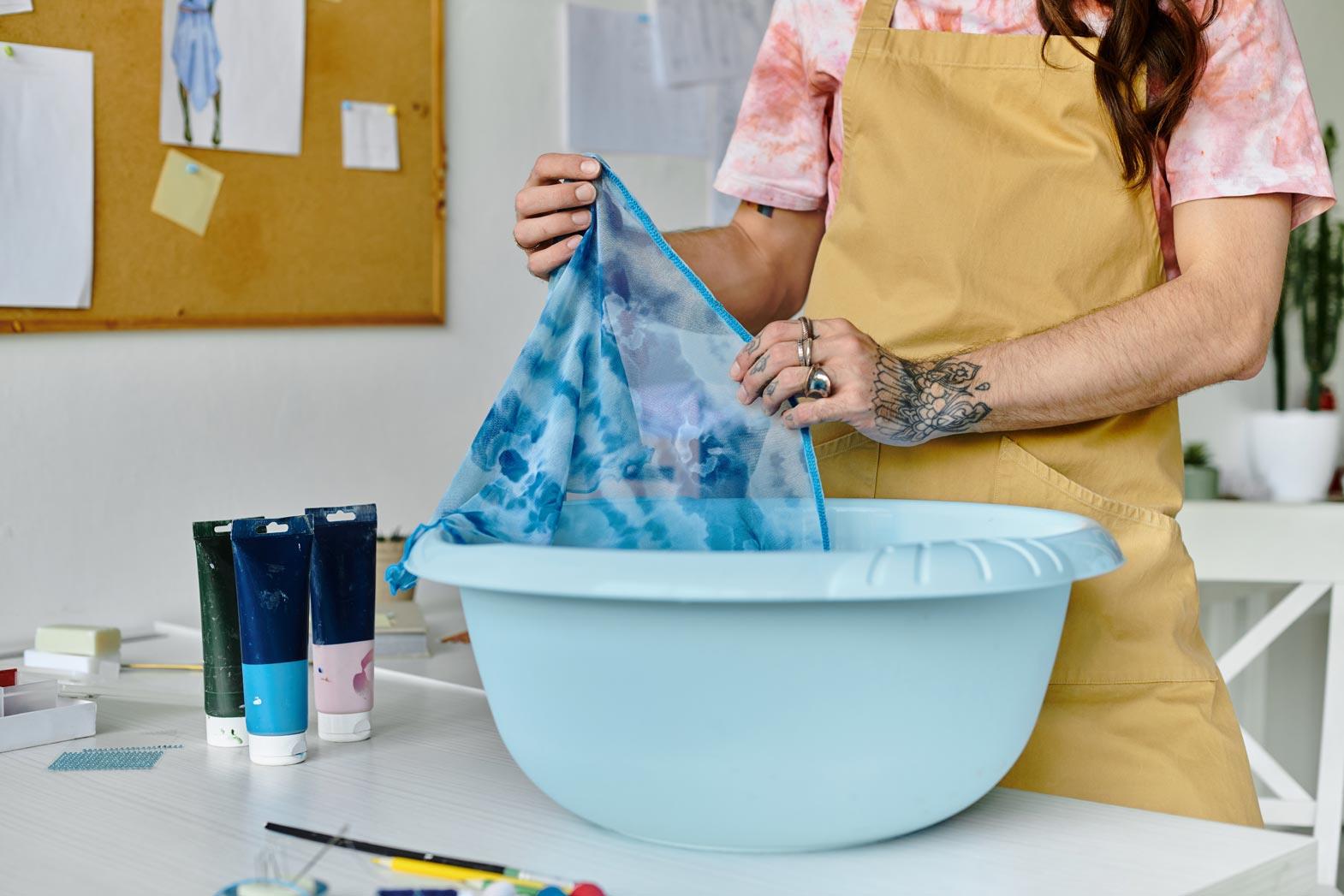In the package machines, yarn dyeing is done at high temperature and under high pressure (HTHP). There are horizontal high-temperature machines, which have dyeing carriers with vertical spindles, which are placed into the machine with the help of trolleys. These machines are erected at the ground level and hence do not need an elevated platform, thus making the dye house design and layout simple.
Apart from horizontal, tubular high-temperature high-pressure dyeing machines are also available. These machines have single or several tubes that act as small dyeing vessels, each with an individual spindle. These machines can be operated either with fully loaded tubes or partial loads by using dummies. Since all individual tubes in a machine are connected and serviced by a main pump, therefore it is easy also viable to control as many tubes as required and tubes can also be disconnected if required. High-temperature (HT) softflow/overflow dyeing machines are also available in the market.
The HT softflow/overflow dyeing machines are popular high-temperature dyeing machines, especially for dyeing polyester and its blends that are being used by a large number of manufacturers.
The advantages of high-temperature machines are visible to the manufacturers everywhere in the world, so the main intent of the textile sector is to save energy by employing these machines for the process of dyeing. Countries including India, China, Hong Kong, etc. are manufacturing and exporting the high-temperature dyeing machines to various parts of the world. The research and development with regard to HT machines have resulted in a new generation of high-temperature machines that are not only viable and efficient but also conserve energy. The technical developments have ensured that the high-temperature dyeing machines are highly sophisticated with easy operability, perfect control, and automation. This has ensured that the HT machines are being increasingly used for the purpose of dyeing.
The overall sale graph of high-temperature dyeing machines has also shown an upward trend. There are HT machines available that offer liquor ratio as low as 1:4. The quality of dyeing the yarn has significantly improved with these machines; also so many resources are saved in the form of water, electricity, money, and time. These machines are designed to shorten the lengthy process of dyeing yarns like cotton. The modern HT machines are compressed to ensure that they do not occupy too much space like their traditional counterparts.
These machines save up to 40 percent water and up to 19 percent chemical, apart from saving production cost by 30 percent. The outstanding performances of the contemporary HT machines is attributed to the special features that the companies especially the ones established in developed countries like Germany, Japan etc. are continuously adding.
Apart from greatly benefitting the environment, the textile manufacturers also benefit by HT machines that increase their profit margin. The ever swelling competition in the field of dyeing and printing has severely cut down the profit margins of manufacturers. The initial investment in the various types of HT machines ensures that the dyeing industry maintains a healthy saving percentage throughout, which has resulted in increased profit margin.
The results of using HT machines to dye polyester and cotton yarns are remarkable. Polyester materials comprise more than half of all textiles dyed globally, with 39 million metric tons projected to be dyed annually by 2015. Cotton textiles form the second largest majority after polyester. Even the markets for second hand HT machines are promising, as developing nations prefer to buy technologically advanced HT machines from developed nations like Germany. This has allowed the HT machines to become a wise and a futuristic investment.
In several cases it is difficult to interpret the environment effects of technology. The world is realising the significance of adopting ways to lessen the burden on environment and all this without compromising on either the product quality or adding extra zeros to the cost of production. HT machines are one of the several changes that the textile industry has brought to ensure that the cost of dyeing is remarkably slowed down, the quality of dyed yarn is improved and the use of water and chemicals is reduced.
References:
1. Textilelearner.com
2. Ptj.com.pk
3. Textilemachine.fangzhijixie.com








Comments